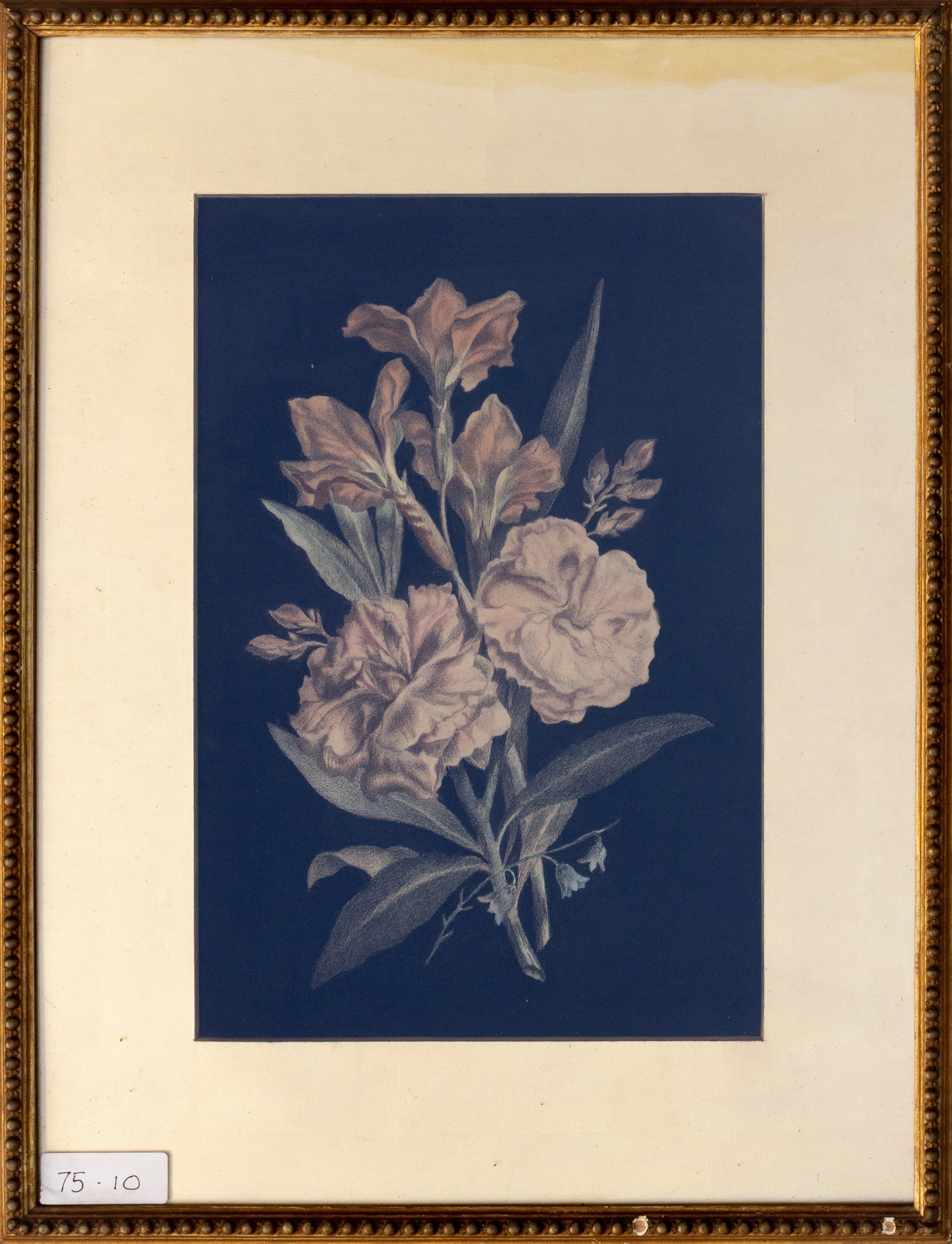75.10 Botanical drawing
English
A botanical drawing by an unknown artist using coloured crayons on black paper from the end of the 19thcentury. Framed. 22 cm wide by 33 cm high.
The 19th century was a period of great interest in the natural world, and a time of intensive activity identifying, collecting and codifying species of plants, animals and insects. This led to a worldwide emergence of ranks of botanists, gardeners and natural historians, and alongside them, the botanical illustrator flourished, of whom the best known from Britain from that period are probably William Jackson Hooke, Anne Pratt, Walter Hood Finch and Marianne North. The skill of the botanical illustrator is to be able to create a compromise of accuracy, an idealized image from several specimens and the inclusion of face and reverse of the features such as petals and leaves. This example, bought from the Warwick Antique Centre in 1975 can be accurately dated by its frame (made by John H Paris, 15 and 17 Leece Street, Liverpool) to 1885. The two larger flowers (according to a ‘plant identifier’ app.!) are Mathiola Incana, and the others in the bunch are Nerium Oleander. I await correction by those more knowledgeable than me. The sprig at the bottom is harebell.
Spanish
Dibujo botánico, de autor desconocido, elaborado con lápices de colores sobre papel negro a finales del siglo XIX. Está enmarcado y mide 22 cm de ancho por 33 cm. Nº de catálogo 75.10.
“El siglo XIX fue un período de gran interés por el mundo natural, y una época de intensa actividad de identificación, recolección y codificación de especies de plantas, animales e insectos. Todo ello favoreció la proliferación mundial de un gran número de botánicos, jardineros e historiadores naturales, y junto a ellos floreció el ilustrador botánico, de los cuales los más conocidos en Gran Bretaña en ese período sean probablemente William Jackson Hooke, Anne Pratt, Walter Hood Finch y Marianne North.
La habilidad del ilustrador botánico es ser capaz de crear un compromiso de precisión, una imagen idealizada de varios especímenes y la inclusión del anverso y el reverso de características tales como pétalos y hojas. Este ejemplo, comprado en el Warwick Antique Centre en 1975, se puede fechar con precisión por su marco (hecho por John H. Paris, Leece Street 15 y 17, Liverpool) hacia 1885. Las dos flores más grandes (según información obtenida a través de una app identificadora de plantas!) son Mathiola Incana, y los otros en el grupo son Nerium Oleander.
Espero la corrección de aquellos más conocedores que yo. La ramita en la parte inferior es campanilla”.
